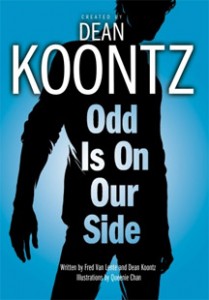Defining Manga; Does It Matter?
When the NYT comics reporter, George Gustines recently asked, “What is Manga?“, the comics community groaned, “What? Have we gone back to 2000? Do we really need to define manga yet again?”
Folks who read past the headline discovered this was not another attempt to explain Japanese comics to the masses but instead an examination of how the definition of manga has changed. Gustines interviewed Tokyopop Senior Vice President Mike Kiley who sees it this way,
“It used to be fairly straightforward to say that manga were black-and-white comics originating in Japan. But for many years now, there have been manga ‘variants’ in many places around the world…In my humble opinion, while my roots are in Japan and my first love of ‘comics’ really comes from Japan, I think a lot of these distinctions have become meaningless.”
In my work collecting and discussing manga with readers, I have been careful to maintain the following distinction: manga are comics from Japan, whereas manga-style comics are works produced outside Japan that with varying degrees of intent and success integrate that country’s traditions into their storytelling. Over the years I’ve made that distinction in direct response to my readers. Manga readers wanted only titles from Japan while the non-manga readers steered clear of Japanese origin titles.
The suggestion that these distinctions are now meaningless made me wonder how true this is from the reader’s point of view. As a publisher of both manga and manga-style works, Tokyopop and Mr. Kiley benefit if readers no longer judge titles by their origins. How do the readers rather than the publishers feel?
Librarians I asked both supported Kiley’s claim for younger readers and deflated the idea that the divisions are a thing of the past.
Esther Keller, a school librarian in New York, reports that younger readers don’t particularly care:
I work in a middle school, so at times, the kids are less sophisticated in their reading choices than high schoolers, but they gravitate to titles that are familiar to them, whether it’s from TV or some other media tie-in. In fact, recently, I overheard a group of students talking as they were thumbing through a volume of One Piece. “You know,” one said, “All these comics are from China.” I did correct them and I explained a little more about manga. But to these kids, it didn’t matter where the comics came from, just that it’s a format they enjoy reading.
Michelle Chrzanowski, from the Chesapeake Public Library in Virginia, reports that the divide is alive and well:
…For my readers, there is a definite divide. Some of the younger readers will call everything either manga or graphic novels. They are mostly the ones who read titles based on their popularity (i.e. they are on TV – Cartoon Network, Nick, etc.). Then I have a group that are what I call the “manga snobs.” They will only read manga (comics from Japan) and if I attempt to get them to read an OEL [Original English Language title], they inform me that they do not read “non-manga.” Personally, I think the definition depends on the reader; it is more blurry for the casual manga or graphic novel reader. However, if the reader is a dedicated manga reader or someone who has been reading for a while, they will definitely know the difference and will not be afraid to let you know about it.
Gilles Poitras, librarian and author of key reference works on Japanese popular culture including The Anime Companion, is skeptical of Kiley’s motives and points out that using country-specific terms shows respect for the creating culture.
It sounds like the old “let’ -call-anything-manga” line where all sorts of non-Japanese books had manga tacked onto the title or ads just to make a buck.
Frankly, I like my definitions clear. Manga is made in Japan for a Japanese audience, manhwa is made in Korea for a Korean audience and manhua is the term for Chinese works.In the case of non-Japanese works like manhwa I find it disrespectful to the Koreans to call it manga. The Koreans, and other nations, deserve their own terms for their distinctive works.
Hilary Chang, hailing from McCully-Moiliili Public Library in Honolulu, finds her patrons agree with Gilles sentiment.
I personally feel “manga” means “Japanese comics” but know it has come to mean in the U.S. comic books with a certain art style. Of course, in Japan, “manga” just means “comics” and does not specify origin. However, my patrons (especially since we’re so much closer to Japan) feel if it isn’t from Japan, it shouldn’t be called “manga.” They feel even calling it “Original English Manga” is like saying “Russian Yakuza.” Just use the term “graphic novel” or “organized crime” rather than trying to create an association just because manga is popular now.
Mr. Kiley concludes with the following sentiment:
At this point, it’s probably more helpful to consumers to ‘shelve’ (in a retail sense) comics by genre and by age range, rather than by minutely splitting hairs over whether a comics version of a British writer’s young adult novel illustrated by a Korean artist in a ‘manga’ style should be considered ‘manga’ or not. For me, it’s all about choosing and creating the best stories, and then making sure they get put in front of an audience eager to read them.
In spirit, I agree with Kiley’s point: the ultimate decision for any reader should be whether the story is any good. Dividing by age range and genre are tasks libraries are already tackling. The country of origin as a defining feature will matter less and less over time. Given that our youngest readers aren’t married to the distinctions older fans abide by, these lines may eventually disappear altogether.
At the same time, I see Gilles’s and Hilary’s point that works created in one culture have significant markers precisely because they are from that culture. You read them because of those trademarks. It feels awkward at best to drop or misuse a term that shows a sensitivity to that difference without having a good reason.
Until the distinctions truly fade away, I will continue using specific vocabulary and teaching it to readers.



